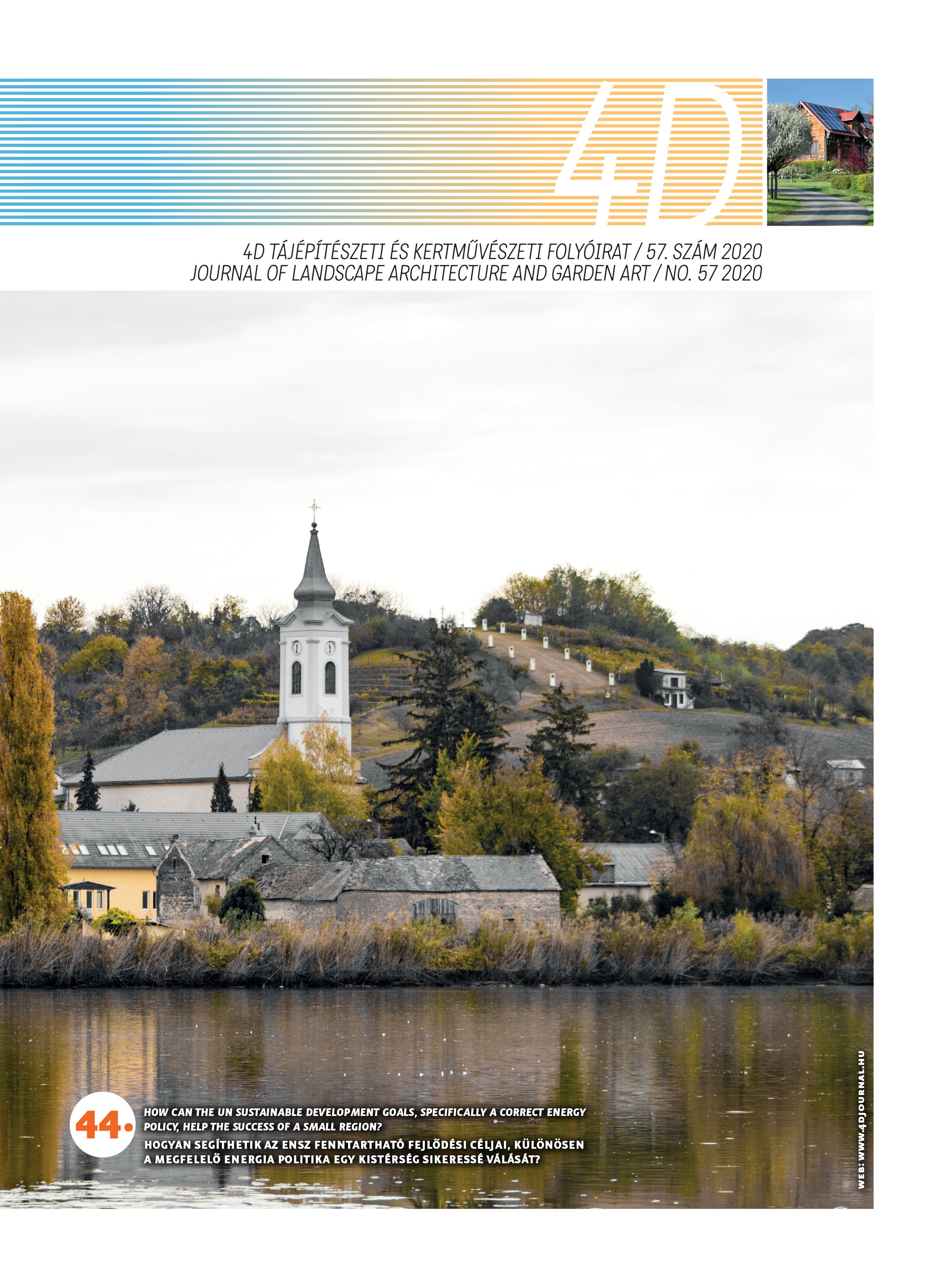The role of areas exposed to excess water near Rába and Sebes-Körös rivers in the protected areas' system
DOI:
https://doi.org/10.36249/57.5Keywords:
Rába river, Sebes-Körös river, Excess waterAbstract
Excess water inundation endangers a significant proportion of Hungary’s flatlands. As a result of the complex excess water risk mapping1 completed in 2015, this statement shows the extent of flooding occurs with a probability of more than 1%. The proportion of more frequent excess water inundation (in this particular case the chance of flooding occurs with a probability of more than 10%) in the Great Plain is about 24.42% (General Directorate of Water Manage ment – data supplying, 2020). Besides river regulations, numerous factors have contributed to the formation of excess water,2 especially anthropogenic interventions, such as the increasing proportion of constructions, paved areas, the intensive agricultural activity, but natural conditions also play an important role. Several studies have been made and are in progress to reveal the economic consequences of excess water, while its ecological potential is relatively slightly explored, although these periodically flooded areas contribute to biodiversity increasing and to create a diversification among species. These areas function as habitats primarily as feeding grounds for animals (for example birds, dragonflies), which prefer wetlands. Research works have confirmed the presence of numerous rare and endangered plant species in drainage canals, on grasslands exposed to excess water and on special agricultural fields with mud vegetation (Molnár– Lukács 2014). Nowadays, in order to mitigate the effects of climate change, the role of wetlands and water retention become appreciated, more and more international and national strategies and programs give priority to the role of water (for example the so-called European Green Deal 2019). Therefore, areas exposed to excess water are ecologically more valuable than areas with similar characteristics but not exposed to excess water. These areas create a specific, coherent, periodic network of blue and green infrastructure. The quantified indicators of their natural and landscape values besides the presence of protected species and the naturalness of habitats, the various nature protections – the aim of our article is to reveal this.
References
Molnár V. Attila – Lukács Balázs András (2014): Belvizes szántók. Átok vagy áldás? Élet és Tudomány, 2014 (15).454-456.
Pálfai Imre (2004): Belvizek és aszályok Magyarországon. Hidrológiai tanulmányok. Közlekedési Dokumentációs Kft.: Budapest.
Szlávik Lajos (2013): Szembenézünk az árvizekkel. A 2013. évi árvizek és belvizek krónikája. Országos Vízügyi Főigazgatóság: Budapest.
Országos Vízügyi Főigazgatóság, Műszaki Téradat Szolgáltató Főosztály adatszolgáltatás (2020): Komplex belvíz-veszélyeztetettségi térkép és belvízi elöntés gyakoriság térkép térinformatikai adatbázisa
EURÓPAI BIZOTTSÁG, COM (2019) 640 final: A bizottság közleménye az Európai Parlamentnek, az Európai Tanácsnak, a Tanácsnak, az Európai Gazdasági és Szociális Bizottságnak és a Régiók Bizottságának. Az európai zöld megállapodás. Brüsszel, https://ec.europa.eu/transparency/regdoc/rep/1/2019/HU/COM-2019-640-F1-HU-MAIN-PART-1.PDF [2020.10.26.]
/2010. (V. 13.) Korm. rend. a vizek többletéből eredő kockázattal érintett területek meghatározásáról, a veszély- és kockázati térképek, valamint a kockázatkezelési tervek készítéséről, tartalmáról. [online] In: Nemzeti Jogszabálytár honlapja. URL: http://njt.hu/ [2021.01.22.]
ÉVI CXXXIX. TÖRVÉNY Magyarország és egyes kiemelt térségeinek területrendezési tervéről. [online] In: Nemzeti Jogszabálytár honlapja. URL: http://njt.hu/ [2021.01.20.]
/1997. (VII.17.) KHVM rendelet az ár- és belvízvédekezésről. [online] In: Nemzeti Jogszabálytár honlapja. http://njt.hu/ [2021.01.22.]
Megvalósult Magyarország belvízi veszélytérképezése. Belügyminisztérium Vízügyi Főigazgatóság: Budapest. [online] In: Vízügyi honlap. URL: https://www.vizugy.hu/ [2020.11.15.]
Természetvédelmi Információs Rendszer térképei. Agrárminisztérium, Belügyminisztérium, Energiaügyi Minisztérium: Budapest. [online] In: Országos Környezetvédelmi Információs Rendszer (OKIR) honlapja. URL: http://web.okir.hu/ [2020.10.29.]
Atlaszok. 2. Belvízvédelmi készültségi fokozatok. Országos Vízügyi Főigazgatóság: Budaest. [online] In: Vízügyi Geoinformatikai Portál. URL: http://geoportal.vizugy.hu [2020.10.29.]
Magyar Madártani és Természetvédelmi Egyesület (2021): Kis-Sárrét. Magyar Madártani és Természetvédelmi Egyesület: Budapest [online] In: Natura 2000 adatbázis honlapja. URL: https://natura.2000.hu/hu/teruletek/k/HUKM10002 [2021.01.22.]
Downloads
Published
Issue
Section
License
Copyright (c) 2020 Varga Dalma, Hubayné Horváth Nóra, Módosné Bugyi Ildikó

This work is licensed under a Creative Commons Attribution-NonCommercial-NoDerivatives 4.0 International License.
A folyóirat Open Access (Gold). Cikkeire a Creative Commons 4.0 standard licenc alábbi típusa vonatkozik: CC-BY-NC-ND-4.0. Ennek értelmében a mű szabadon másolható, terjeszthető, bemutatható és előadható, azonban nem használható fel kereskedelmi célokra (NC), továbbá nem módosítható és nem készíthető belőle átdolgozás, származékos mű (ND). A licenc alapján a szerző vagy a jogosult által meghatározott módon fel kell tüntetni a szerző nevét és a szerzői mű címét (BY).



